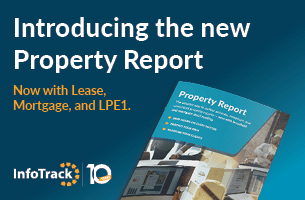
Upfront information: What next?
The withdrawal of the material information (MI) guidance for estate agents was met last week with a mixture of alarm and celebration by lawyers.
It is not yet clear what impact this will have on the development of the Law Society’s TA6 form, whose controversial redrafting was largely predicated on the guidance and the general push towards more upfront information.
Since July 2022, National Trading Standards’ estate and letting agency team (NTSELAT) has been rolling out rules that require the inclusion on MI on all property listing, with the detailed guidance issued in November 2023.
An NTS spokesman said: “The development of guidance on material information was based on supporting estate and letting agents to meet their legal obligations under Consumer Protection from Unfair Trading Regulations 2008.
“These regulations have since been superseded and replaced by the new Digital Markets, Competition and Consumers Act 2024. In light of this, the NTS guidance on material information for estate agents and letting agents has been withdrawn.”
The change puts MI within the remit of the Competition and Markets Authority (CMA), which has published broad guidance on its approach to consumer protection under the Act but nothing specific about property. Its enforcement powers are considerably stronger than those of NTS.
The NTS spokesman said any new guidance was now a matter for the government to consider. “Should the government commission such guidance, NTS would of course by happy to provide input to any consultation.”
According to Propertymark, the estate agents body, while the 2024 Act recognises MI as key information a consumer needs to make an informed transactional decision, the legal threshold for compliance has changed.
“Under the new rules, omitting this information is now automatically considered an unfair commercial practice, regardless of whether the omission affects the consumer’s decision,” it told members.
The new rules require “clear and complete presentation of key facts”, Propertymark said. “While no sector-specific guidance has been issued yet, the burden is now on agents to assess what the average consumer needs to know to make a decision.”
Law Society vice-president Mark Evans said: “NTSELAT have left consumers, conveyancers and estate agents in the dark by the immediate withdrawal of the material information guidance.
“We are urgently seeking further clarification on the information that should be provided in accordance with the [2024 Act].”
A spokesman added that it was too early to say whether this would have any impact on the way forward with TA6 announced in March.
This involves two new forms to replace the discredited fifth edition: a sixth edition mandatory for Conveyancing Quality Scheme (CQS) members from March 2026 and designed to be used when an offer has been accepted; and a material information form, which will not be mandatory for CQS members, and is designed for conveyancers to use if sellers instruct them before listing their property.
Meanwhile, Sheila Kumar, chief executive of the Council for Licensed Conveyancers, described the move as “regrettable and a backward step in the provision of information to guide potential home buyers in their choice”.
She went on: “Until such time as the CMA or a future regulator of estate agents issues rules or guidance, we hope that the sector will continue its progress so far in adopting the approach set by NTS.
“Perhaps the Home Buying and Selling Council and the Digital Property Market Steering Group could take action here, because more timely and accurate information is vital to delivering faster and more certain transactions that meet the needs of home buyers better.”
Rob Hailstone, chief executive of the Bold Legal Group, which represents hundreds of conveyancing firms, said the news had sent “huge shockwaves to estate agents and perhaps minor shockwaves to most conveyancers”.
He explained: “As most conveyancers were aware, and despite many offering to assist agents, the guidance was being complied with by few.
“How this will affect conveyancers probably depends partly on what the Law Society decides to do next with the proposed TA6 changes.”
Mr Hailstone suggested that continuing with the plan for two separate forms “seems the best of both worlds and sensible”.
But he questioned whether any new rules or guidance would refer to disclosing restrictions, rights and covenants, etc. “If not, will conveyancer input be needed at all?”
He concluded: “Whatever happens, this it is yet another step backward as far as providing upfront information for property buyers is concerned and makes it harder for conveyancers to receive instructions prior to offer and acceptance and thereby get slightly higher up the food chain.”
Beth Rudolf, director of delivery for the Conveyancing Association, stressed that, from a legal perspective, withdrawal of the guidance did not change the situation as MI was “still required”.
“NSELAT had made it clear that the guidance would need to be updated when the Digital Markets Competition and Consumer Act came out and no doubt CMA are considering how to deal with the guidance going forward.
“On the plus side, the benefits to both consumers and stakeholders of gathering all information upfront to identify and verify material information, have been replicated time and again with the pilots undertaken.”
The Royal Institution of Chartered Surveyors (RICS) said it had voiced its concerns at the consultation phase that the CMA guidance contained ambiguities “which leave businesses to interpret the law as they see fit”.
It added: “RICS feels that the withdrawal of the material information guidance and reference to the [new Act] creates uncertainty for our members and consumers.
“We would welcome working with others in the sector such as the Home Buying and Selling Council and Ministry of Housing, Communities and Local Government to address the gaps left by the announcement by NTS.”
The Property Lawyers Alliance welcomed withdrawal of the guidance, which it had long called for, including in response to the CMA consultation.
Vice-chair Colin McWilliams wrote on LinkedIn: “My sincere condolences go out to the proptech sector, conveyancing factories, the Law Society, and washed-up conveyancers selling ‘property packs’ this morning, as the news breaks that material information passed away peacefully in its sleep.”
He said conveyancers had been “gaslit into believing that MI was here to stay, and we either need to embrace it or be left behind”.
Also on LinkedIn, Chris Proctor, head of conveyancing at Yorkshire firm Hattersleys, described the move as “a victory for common sense”.
He said: “The guidance wasn’t being implemented by many estate agents, and no-one had any interest in enforcing it. Why? Because complying with it took time and cost money.”















Whether or not you have a positive view about Material/Up-front information in a world where we are constantly told to be nicer to each other, I am aghast at the lack of sincerity, the bitterness, and the unpleasantness that permeates through the comment posted by Colin McWilliams on LinkedIn.